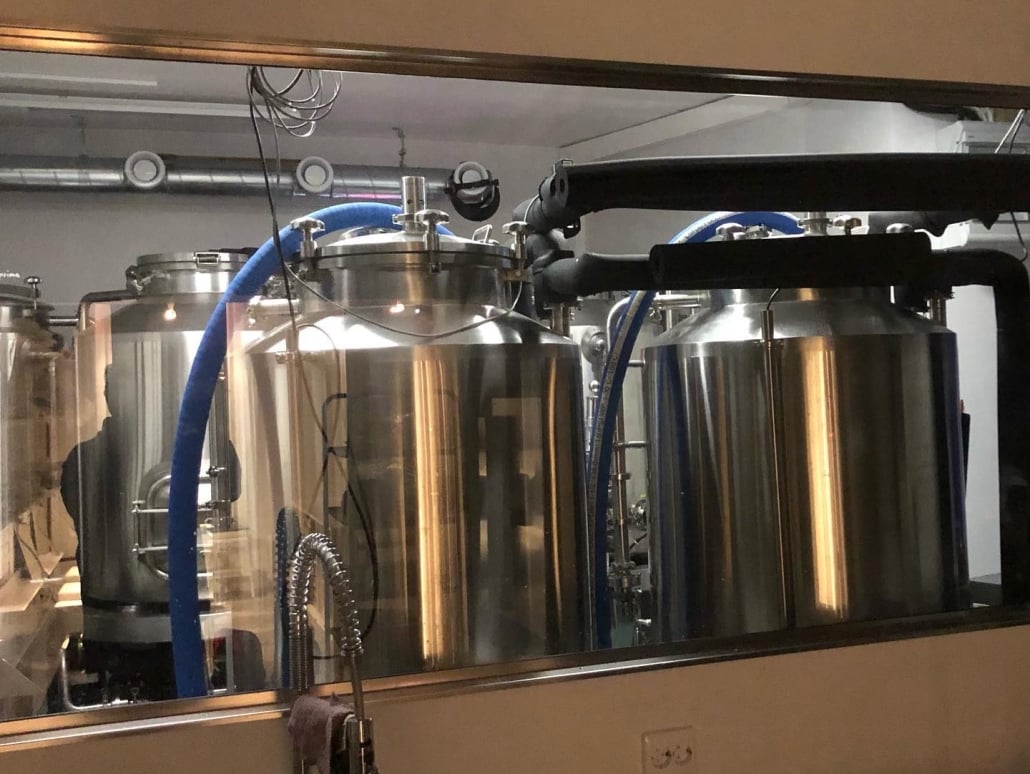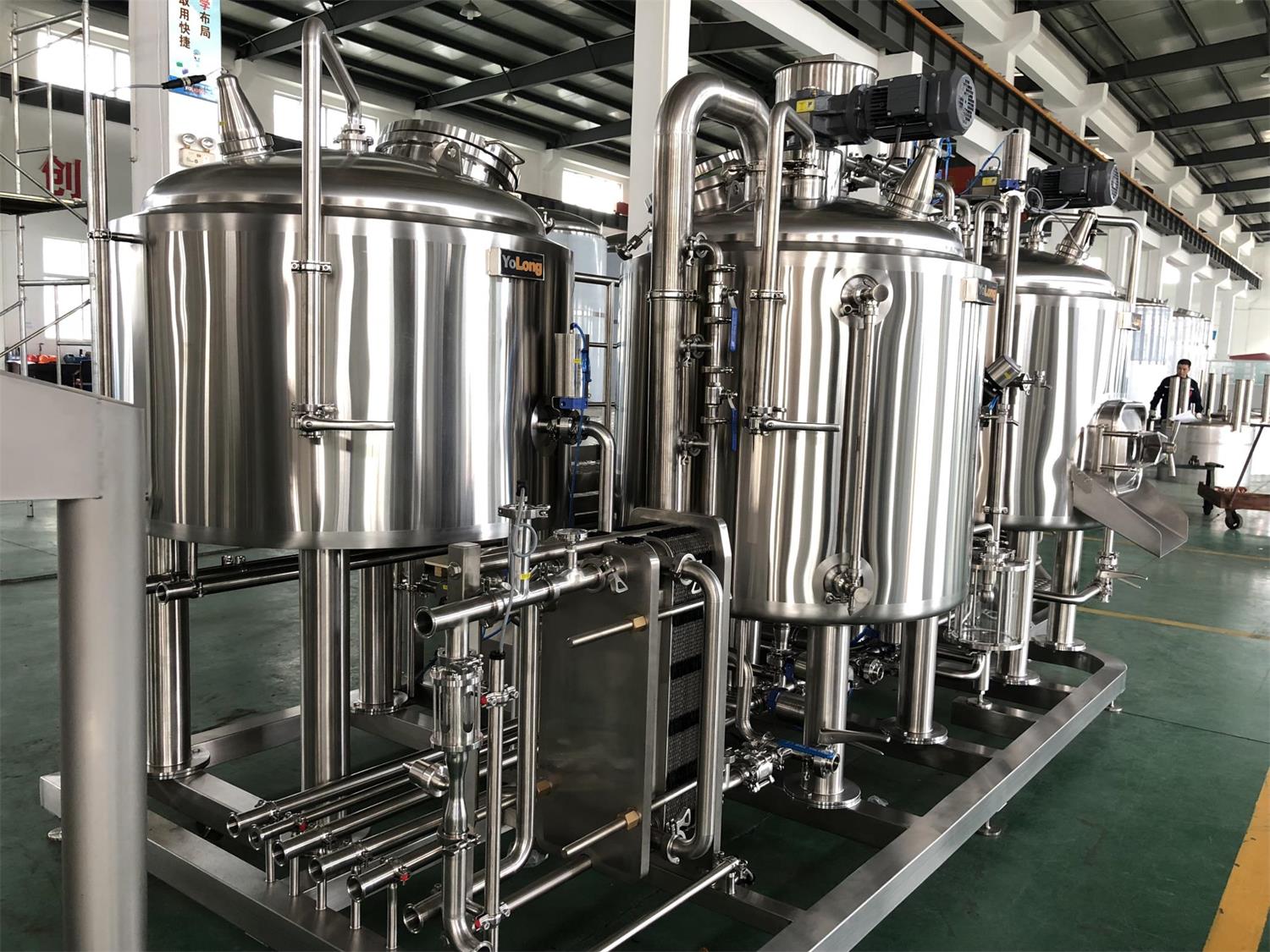Nano Brewery Equipment:12 Essential Steps
Introduction
Welcome to the exciting world of nano breweries and the essential equipment that drives their craft beer production. In this article, we will delve into the concept of nano brewery equipment, its advantages, key components, selection process, setting up a nano brewery, operational considerations, challenges faced by nano breweries, equipment maintenance, and emerging trends in the industry.
What is Nano Brewery Equipment?
Nano brewery equipment refers to small-scale brewing systems designed to produce craft beer in limited quantities. Unlike large commercial breweries, nano breweries typically operate on a much smaller scale, focusing on quality, experimentation, and unique flavors rather than mass production. These setups are ideal for aspiring brewers, enthusiasts, or even established brewers looking to test new recipes without the constraints of large-scale production.

The Advantages of Nano Brewery Equipment
Cost-Effectiveness
Nano breweries offer cost-effective solutions for those entering the craft beer market. The smaller batch sizes reduce the initial investment and raw material costs, making it more accessible for passionate individuals to turn their brewing dreams into reality.
Space Efficiency
With their compact size, nano breweries can fit into tight spaces, making them suitable for urban environments or areas with limited real estate options.
Flexibility and Experimentation
Nano breweries encourage experimentation and innovation in brewing. Brewers can continuously try new ingredients, styles, and brewing techniques to create unique and exciting flavors.
Sustainability and Environmental Impact
Nano breweries generally have lower water and energy consumption compared to larger breweries, aligning with the growing emphasis on sustainability and environmentally conscious practices in the brewing industry.
Key Components of Nano Brewery Equipment
A well-equipped nano brewery consists of various essential components to facilitate the brewing process. These include:
Milling System
The milling system is responsible for crushing and grinding grains, preparing them for mashing.
Mash Tun
The mash tun is where milled grains are mixed with hot water to extract fermentable sugars and produce a sugary liquid called wort.
Lauter Tun
The lauter tun separates the liquid wort from the solid grain husks after mashing.
Brew Kettle
The brew kettle is where the wort is boiled, hops and other ingredients are added, and flavors are developed.
Fermentation Tanks
Fermentation tanks are vessels where yeast is added to the wort to convert sugars into alcohol and carbon dioxide.
Cooling System
The cooling system helps regulate temperatures during various stages of the brewing process.
Cleaning and Sanitization System
Proper cleaning and sanitization of equipment are crucial to maintain hygiene and produce high-quality beer.
Selecting the Right Nano Brewery Equipment
Choosing the right equipment is vital for the success of your nano brewery. Consider the following factors:
Brewing Capacity and Production Goals
Determine the desired brewing capacity and the amount of beer you aim to produce in a given period.
Available Space and Layout Considerations
Evaluate the available space for setting up your nano brewery and plan the layout accordingly to optimize workflow.
Quality and Material of Construction
Invest in equipment constructed from durable and food-grade materials to ensure longevity and product quality.
Energy Efficiency and Operating Costs
Opt for energy-efficient equipment to reduce operational costs and minimize environmental impact.
Integration with Digital Brewing Technology
Explore equipment that integrates with digital brewing systems for enhanced automation and precision in brewing processes.
Setting Up Your Nano Brewery
Setting up a nano brewery involves various steps to establish a successful and legally compliant operation.
Location and Licensing
Choose a suitable location for your brewery, considering zoning regulations and obtaining the necessary licenses and permits.
Brewery Design and Setup
Plan the layout and design of your brewery to optimize space utilization and workflow.
Utilities and Infrastructure Requirements
Ensure you have access to sufficient water, electricity, and other utilities required for brewing.
Safety and Compliance Measures
Adhere to safety standards and comply with all legal requirements to operate a brewery.
Operating a Nano Brewery
Operating a nano brewery involves managing various aspects of the brewing business.
Recipe Development and Brewing Process
Experiment with different recipes and brewing techniques to create unique and marketable beers.
Quality Control and Assurance
Implement quality control measures to maintain consistency and ensure the highest quality of beer.
Packaging and Distribution
Decide on packaging options and develop distribution strategies to get your beer to market.
Branding and Marketing Strategies
Create a strong brand identity and develop effective marketing strategies to attract customers.
Customer Experience and Engagement
Focus on providing an excellent customer experience to build loyalty and word-of-mouth referrals.
Challenges and Solutions for Nano Breweries
Nano breweries face unique challenges that require strategic solutions.
Limited Production Capacity
Address the challenges of limited production capacity by focusing on quality and creating a niche market.
Competing with Established Breweries
In a competitive craft beer market, nano breweries often find themselves up against larger, more established breweries. To stand out and thrive, consider the following strategies:
- Differentiation: Focus on crafting unique and distinctive beers that set your nano brewery apart from the rest. Experiment with diverse ingredients, brewing techniques, and styles to offer something that cannot be found elsewhere.
- Local Community Engagement: Embrace your local community and build strong ties with customers. Participate in local events, collaborate with neighboring businesses, and sponsor community initiatives to create a loyal customer base.
- Tasting Room Experience: If feasible, create a warm and inviting tasting room where customers can sample your brews. Offer tours, host events, and provide a personalized experience that fosters a strong connection with your brand.
- Online Presence: Establish a robust online presence through a website and social media channels. Engage with your audience, share behind-the-scenes content, and regularly update your followers on new releases and upcoming events.
- Craft Beer Festivals: Participate in craft beer festivals and competitions to gain exposure and get your beers in front of a broader audience. Awards and recognition at such events can significantly boost your brewery’s reputation.
Managing Costs and Profitability
As a small-scale brewery, managing costs is crucial for maintaining profitability. Here are some cost-saving measures:
- Smart Ingredient Sourcing: Establish relationships with local suppliers and negotiate favorable deals for your raw materials. Buying in bulk whenever possible can also help lower costs.
- Energy Efficiency: Invest in energy-efficient equipment and implement practices to reduce energy consumption. This not only saves money but also aligns with sustainability goals.
- Waste Reduction: Implement strategies to minimize waste and repurpose byproducts from the brewing process creatively. For instance, some breweries use spent grains for animal feed or partner with local farms for composting.
Regulatory and Compliance Issues
Navigating the regulatory landscape can be challenging for nano breweries. Stay compliant by:
- Understanding Local Laws: Familiarize yourself with local, state, and federal regulations related to alcohol production and distribution. Seek legal counsel if needed to ensure compliance.
- Tax and Reporting Obligations: Stay on top of tax obligations and reporting requirements to avoid penalties and legal issues.
Sustainability and Waste Management
As consumers become more environmentally conscious, sustainability becomes a key focus for breweries. Embrace sustainability by:
- Water Conservation: Implement water-saving practices and invest in technologies that reduce water usage during brewing.
- Reusable Packaging: Consider offering reusable or refillable containers to reduce packaging waste.
- Recycling and Reusing: Develop recycling programs for glass, cans, and other materials used in the brewing process.
Nano Brewery Equipment Maintenance
To ensure the longevity and efficiency of your nano brewery equipment, regular maintenance is essential. Here are some best practices:
Cleaning and Sanitization Practices
Maintain a rigorous cleaning and sanitization schedule for all brewing equipment to prevent contamination and off-flavors in your beers.
Preventive Maintenance and Inspections
Regularly inspect and perform preventive maintenance on your equipment to identify and address potential issues before they become major problems.
Troubleshooting and Repairs
Train your staff in basic troubleshooting techniques to address minor equipment issues promptly. For more significant repairs, consult with qualified technicians or manufacturers.
Emerging Trends in Nano Brewing
Stay ahead of the curve and explore emerging trends in the nano brewing industry:
Nano Brewery Collaborations
Collaborate with other local breweries, businesses, or even homebrewers to create unique and exciting beers together. These partnerships can attract new customers and create a sense of camaraderie within the brewing community.
Innovations in Brewing Technology
Keep an eye on advancements in brewing technology. Digital brewing systems, automated equipment, and data analytics can streamline operations and improve product consistency.
Sustainability and Green Brewing
Emphasize sustainable practices, such as solar power usage, water recycling, and eco-friendly packaging, to appeal to environmentally conscious consumers.
Craft Beverage Tourism
Leverage the growing trend of craft beverage tourism by offering brewery tours, tastings, and immersive experiences for visitors.

Conclusion
Nano brewery equipment opens up a world of possibilities for aspiring brewers and craft beer enthusiasts. With its cost-effectiveness, flexibility, and emphasis on quality, nano brewing provides a platform for experimentation and creativity in the craft beer industry. By selecting the right equipment, managing costs, focusing on sustainability, and staying abreast of emerging trends, nano breweries can carve out their niche and thrive in a competitive market.
FAQs
What is the definition of a nano brewery?A nano brewery is a small-scale brewing operation that produces craft beer in limited quantities, often focused on experimentation and unique flavors.
How much does nano brewery equipment cost?The cost of nano brewery equipment can vary depending on the size, features, and quality of the equipment. On average, a basic setup may start at a few thousand dollars, while more sophisticated systems can cost tens of thousands.
What are the advantages of operating a nano brewery?Nano breweries offer advantages such as cost-effectiveness, space efficiency, flexibility in brewing, and a smaller environmental footprint compared to larger commercial breweries.
What are some key components of nano brewery equipment?Essential components include the milling system, mash tun, lauter tun, brew kettle, fermentation tanks, cooling system, and cleaning/sanitization equipment.
How can nano breweries compete with established breweries?Nano breweries can differentiate themselves through unique beer offerings, active community engagement, excellent tasting room experiences, and a strong online presence.
Share this entry
Interested in learning more about Brewing Systems including additional details and pricing information? Please use the form below to contact us!
YOLONG BREWERY EQUIPMENT FAQS
- Commercial Brewery / Craft Brewery / Microbrewery / Nanobrewery
- What is The Difference Between Craft Beer and Industrial Beer?
- The Bespoke Differences In Custom Brewing Systems
- Everything You Need to Know About Kettle Souring
- How to Choose Brewing Equipment for Your business?
- How To Choose The-Best Partner To Build Your Commercial Microbrewing System?
- Two Detection Sensors That You Need To Use In Your Brewhouse System
- Remote Control Applications in Brewing Equipment/How does it work?
- How To Clean Your Brand New Brewery Tanks?

